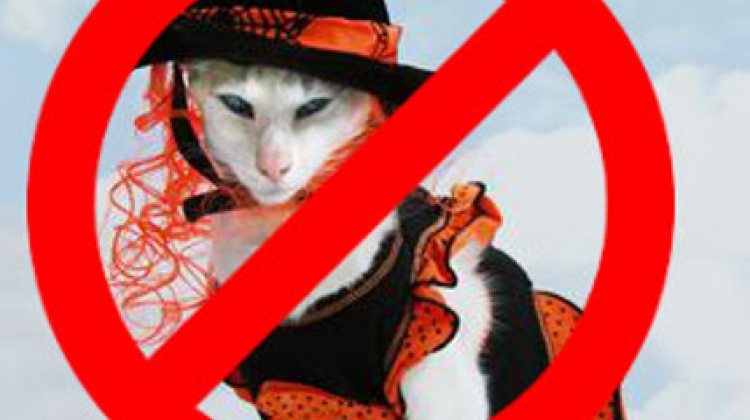Roberta
Wed 13 February 2019
0
Like every year, we approach a season with many holidays, which starts with Halloween and ends with Epiphany. Since october we begin to see around social media images of cats dressed up in costumes ranging from Batman to Freddy Krueger, to Santa Claus, not to mention the endless variety of hats and headbands.
Why is it wrong to have a cat wear a costume? Here are some reasons.
- The tactile sensitivity of cats is very high, this means that whatever comes into contact with the cat's body causes an immediate discomfort. You will have noticed that as soon as a cat has something on its hair, he immediately removes it by licking or shaking. Imagine how annoying it can be to have a costume or an object on his head that completely covers the body!
- A costume causes a feeling of constriction. A cat defends his freedom more than anything else, he does not tolerate any form of constraint, so the experience of feeling forced into a piece of cloth that wraps around his body or other very delicate parts, such as the head or the paws, is terrible for him.
- I often hear people say "it does not bother him, he's staying still, so he must be ok with it". At this point, it's important to know that, faced with a stimulus that causes discomfort, an animal (human included) can respond with one of three reactions: an escape reaction, an attack reaction, or a freezing reaction. The latter is what happens in most cases in which a cat seems still and calm while being dressed: in reality, his stillness is given by a sense of total impotence or, worse still, of terror.
- Many of these costumes and disguises have not undergone any safety testing for animals, and can, therefore, put the animal at risk of injury. In addition, they always have an odour, given by industrial processing, which makes the experience even more negative and unpleasant for the cat. This is due to fact that cats have an infinitely more developed sense of smell than ours and cannot help but feel the unpleasant smell of the fabric which will remain on their hair even once the costume is removed, forcing them to obsessively clean themselves, sometimes even for days (a situation that, unfortunately, is often not noticed or understood by humans who live with the cat).
- The cat may associate the negative experience of the disguise to the person who obligated him to live it, consequently going to undermine the relationship of trust between the cat and his reference human. After the experience of the disguise, episodes of aggression or irritability on the cat's part towards other members of the family, both human and non-human, are frequent.
- If you are thinking "but I'll make him wear it only for a few minutes, just long enough to take some pictures", try to be tickled with a feather under your armpit for a few seconds and you'll understand how even a very short time lived with discomfort can be unbearable.
- There is a last consideration, no less important than the others, to make: putting a costume on a cat will draw everyone's attention to the cat. Generally, cats, hate being at the center of attention, as they are reserved animals, often fearful towards strangers, very sensitive to visual and body communication, and who need their time and space before deciding to approach someone with confidence. Suddenly feeling at the center of attention, trapped in a costume that prevents natural movements and therefore slowing down a possible escape, can be a genuinely terrifying experience.
WARNING: there may be medical conditions that require the use of clothes or bandages on the cat's body. Obviously, in these cases the need for the planned treatment prevails. Yet, it must be kept in mind that the cat will have undergone a stress condition and therefore will need, once the period of treatement is finished, special care aimed at reducing the negative stress and bring the cat back into a proper balanced psycho-physical condition.
FISAP CAB Roberta Roscini
ICAN Feline Behaviourist (Consultant)


Add new comment